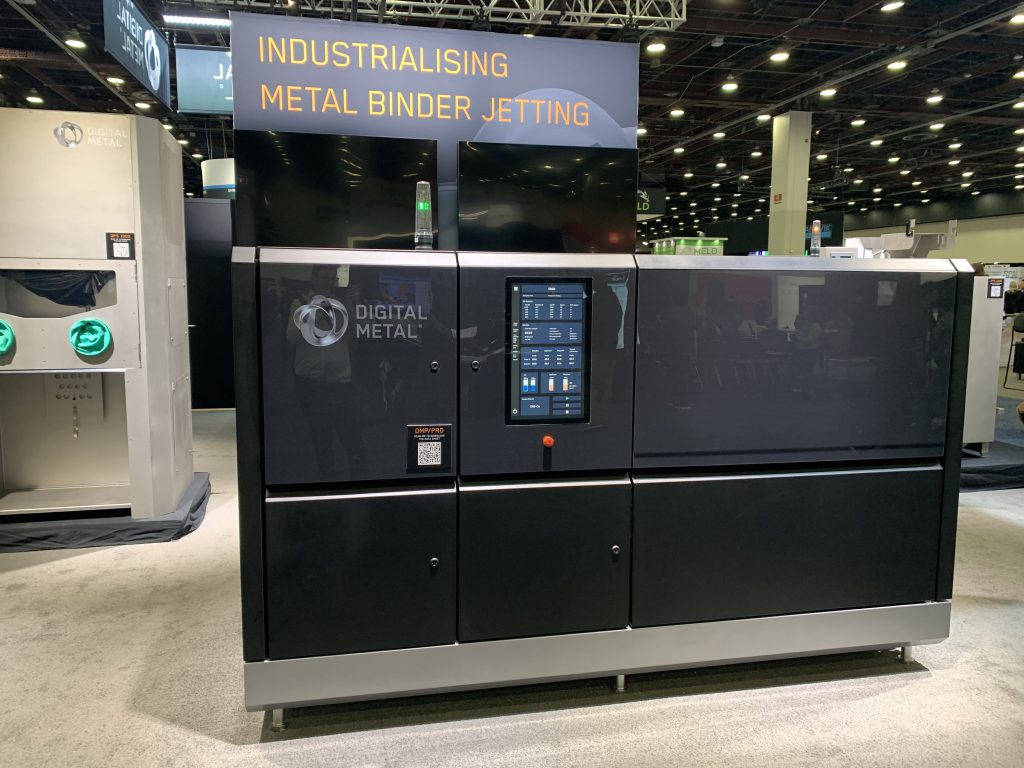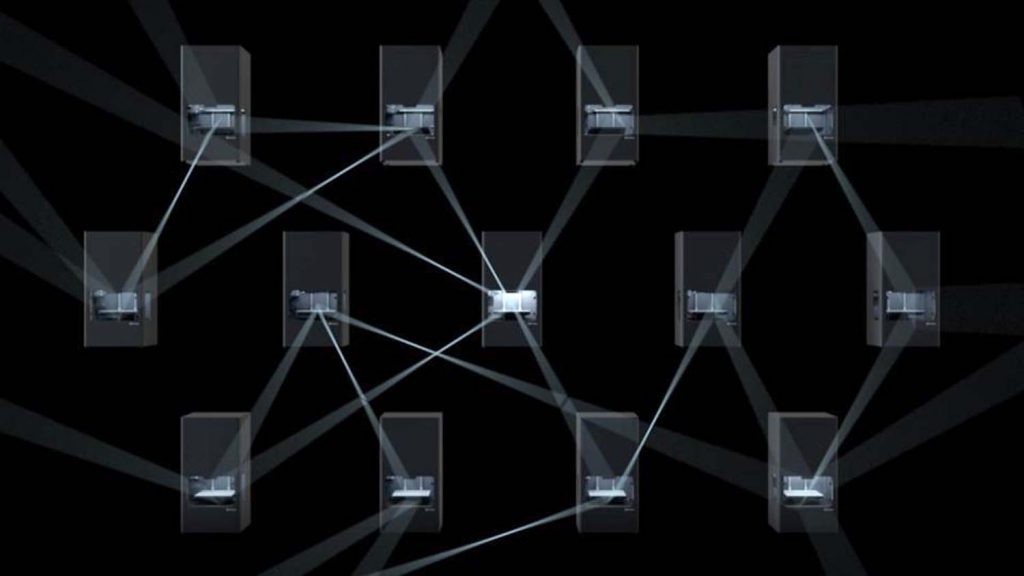Metal and carbon fiber 3D printer manufacturer Markforged has announced its expansion into binder jet additive manufacturing for the first time.
Having bought Höganäs AB subsidiary Digital Metal, Markforged plans to integrate the firm’s technology into its Digital Forge platform. In doing so, the company aims to provide industrial users with enhanced high-throughput 3D printing capabilities, and enable them to “solve manufacturing challenges at point of need.”
“With the Digital Metal acquisition, Markforged is advancing our vision for distributed manufacturing by enabling the reliable, high-volume production of precise metal parts at the point of need,” said Shai Terem, President and CEO of Markforged. “Infusing Digital Metal’s solution into the Digital Forge platform allows us to address new applications in the medical, automotive, luxury goods and other industries.”
“The Digital Metal team has created a robust and scalable solution that complements our existing technologies. I look forward to welcoming their talented people to Markforged.”

Digital Metal’s binder jet technology
Since being founded as a wholly-owned subsidiary of metal powder developer Höganäs AB in 2003, Digital Metal has spent the best part of the last two decades establishing a portfolio of binder jet 3D printers and ancillary equipment. Digital Metal’s flagship system, the DMP/PRO Series, features a printhead with 70,400 nozzles, which enable the rapid jetting of 2 picoliter (a trillionth of a liter) droplets at a high level of precision.
Thanks to its 160 mm-thick diabase platform, as well as its linear motor and air bearing-driven setup, the firm says its machine is also able to ensure accuracy over time, while allowing users to print at an “unparalleled” 8000×1600 DPI resolution.
Digital Metal has continually broadened its portfolio in recent years, adding DM D2 tool steel compatibility for its machines, before introducing its own DM Cu copper 3D printing powder in early-2021. More recently, in order to enhance its systems’ capabilities, the company has launched an automated depowdering station, built to mechanize post-print powder recycling, and help unlock serial production.
On the software front, Digital Metal has also previously managed to triple the speed of the DM P2500, the other 3D printer in its core offering, via an upgrade that has since been fitted to the units as standard. Using its ever-growing portfolio, the firm says its clientele are now increasingly able to produce high-surface quality parts in volume, while its technology itself is “making strides” in new applications.

Markforged’s Digital Forge expansion
Agreed in the form of a ‘definitive agreement’ with Höganäs AB, Markforged’s deal to buy Digital Metal will see it pay $32 million in cash, and around 4.1 million shares in common stock for full control of the firm. Markforged has also agreed to pay $1.5 million in cash to settle certain intercompany balances, and while the deal remains subject to certain conditions, it’s expected to go through during Q3 2022.
In terms of the motivations behind the move, Markforged sees binder jetting as “a highly scalable additive manufacturing technology,” that enables the production of parts from a range of different metals. As such, the company expects that adding the process to its existing Digital Forge offering, will allow it to “expand its addressable market by solving new customer problems” moving forwards.
Markforged also believes that by using its enhanced platform, manufacturers will now be able to create functional metal parts in high volumes with a minimal amount of setup. This is seen by the firm as particularly important, given the lengthy design-to-manufacturing times often associated with traditional processes, thus its acquisition could help make 3D printing easier to deploy and scale on-demand.
“Markforged’s easy-to-use platform, best-in-class software capabilities and material expertise felt like a natural fit for the future of our technology,” adds Christian Lönne, CEO of Digital Metal. “With Markforged’s experience and go-to-market scale, we are confident that we will be able to grow our technology together and help more manufacturers produce the high-volume metal parts they need to drive highly productive and cost-efficient operations.”

Assessing the binder jetting competition
It’s arguable that binder jetting was brought back into the spotlight with Desktop Metal’s compelling approach to marketing. The word around trade shows was often favourable, with binder jet enterprises welcoming the renewed attention on this sub-section of additive manufacturing. Now, Markforged’s Digital Metal acquisition sees it enter an ever-more competitive binder jet 3D printing market. Desktop Metal, bought its main rival ExOne in August 2021 for $575 million, the recent entry of new companies into the sector has seen a fresh batch of potential binder jetting competitors emerge.
Earlier this year, for instance, Spanish 3D printer manufacturer Triditive revealed that it had begun working with Foxconn to develop a new binder jetting system. Although Triditive has already established a portfolio of AMCELL systems, which operate using a combination of binder jetting and Fused Deposition Modeling (FDM), the move effectively marked electronics assembler Foxconn’s entry to the industry.
Elsewhere, automotive manufacturer Volkswagen has expanded its binder jetting usage as well, unveiling plans to integrate the technology into its production workflow in June 2021. In doing so, with the help of HP and Siemens, the company aims to reduce costs and increase productivity at its main manufacturing plant in Wolfsburg, Germany.
To stay up to date with the latest 3D printing news, don’t forget to subscribe to the 3D Printing Industry newsletter or follow us on Twitter or liking our page on Facebook.
For a deeper dive into additive manufacturing, you can now subscribe to our Youtube channel, featuring discussion, debriefs, and shots of 3D printing in-action.
Are you looking for a job in the additive manufacturing industry? Visit 3D Printing Jobs for a selection of roles in the industry.
Featured image shows traders looking up at a Markforged sign outside the NYSE. Photo via Markforged.



